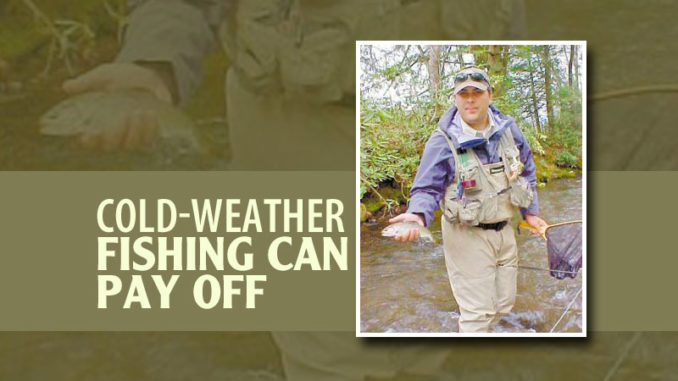
Winter in the mountains is a time of stark beauty, a time when the dominant colors are blue, gray, brown and black, a time when streams run full and clear and icy cold, a time when a warm, sunny day is an event and a blessing for a trout fisher.
Although spring is undoubtedly the ideal season to fish for trout, winter also has its merits. What most anglers discover is that they catch fewer but larger fish during winter. The downside, particularly during the bitterly cold months of late January and February, is that the fishing can test an angler’s mettle and patience. The key to successful winter fishing is to use more nymphs and fewer dry flies. Nymph fishing requires much more finesse than top-water dry-fly fishing, and strikes are more difficult to detect.
“You have to slow your presentation and concentrate on the slower water in the deeper sections of a pool,” said Roger Lowe of Waynesville, a fishing guide and owner of Lowe Guide Service. “Nymphs will be the best flies to use from now until spring. Dry-fly fishing will be limited to the warmest part of the day — between noon and 2 p.m. — when the sun is on the water. The numbers may be fewer, but you’ll find a better quality of fish.”




Be the first to comment